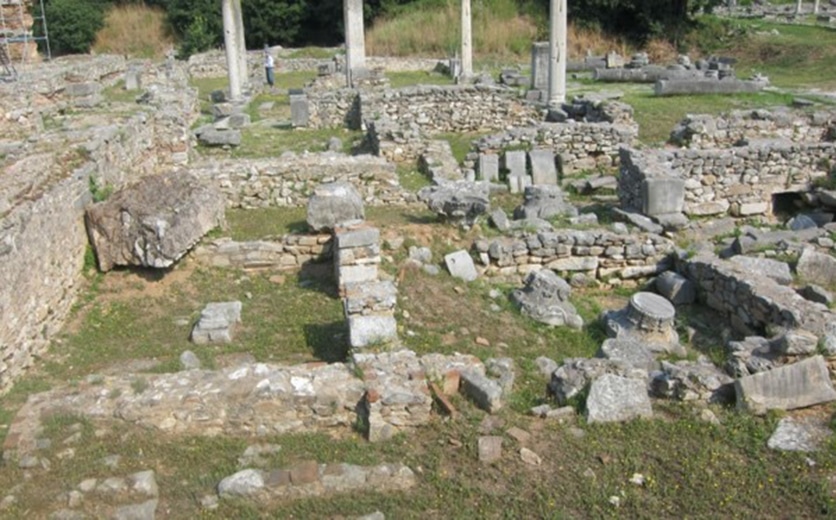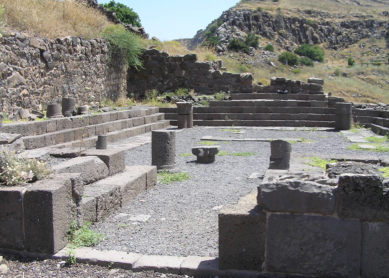Thessalonica (modern-day Thessaloniki) is a port city located on the Thermaic Gulf on the Aegean Sea in northern Greece. It was a city of religious, economic, political, and cultural significance throughout the Hellenistic and Roman imperial periods and appears in several texts of the New Testament.
What was ancient Thessalonica like?
The city of Thessalonica was founded in 315 BCE by King Cassander of Macedon. Cassander named the city for his wife, Thessalonike, who was also the half-sister of Alexander the Great. Between 146 and 120 BCE, the Romans built a highway extending from the Adriatic Sea to the city of Thessalonica. This trade route, known as the Via Egnatia, increased the commercial importance of Thessalonica by connecting it with other trade centers; the city also became the capital of the Roman province of Macedonia. In 42 BCE, Rome gave Thessalonica the status of a “free city,” which allowed for a measure of self-rule, the ability to produce its own coins, and exemption from taxation. In 44 BCE, Macedonia was designated a senatorial province, which gave greater power to Thessalonica’s politarchs. These civic leaders functioned as judges and gathered the city’s council.
As James Harrison has discussed, inscriptions provide evidence for a large number of active professional and religious voluntary associations in the city. These associations appear in greater numbers in Thessalonica than in nearby ancient Mediterranean cities (such as Beroia), probably due to Thessalonica’s status as an urban center, its levels of economic prosperity, and its multi-cultural population. Inscriptions also show that Thessalonica’s multi-culturalism included religious diversity: many different gods are honored by name, including Greek, Roman, and Egyptian deities. Additionally, the city’s archaeological record includes a serapeum (a temple devoted to the Egyptian god Serapis). The Roman imperial cult was another important part of Thessalonica’s religious landscape in the first several centuries CE. Thessalonica also had a vibrant Jewish presence through at least the fourth century CE; for example, an inscription from the third century CE attests to multiple synagogues in the city. In all, Thessalonica was a city of great import economically and politically within the Roman Empire, and it contained a rich diversity of cultures and religious influences as a result.
How does Thessalonica feature in the New Testament?
In the New Testament, Thessalonica is always connected with the apostle Paul. Two Pauline letters are addressed “to the assembly of the Thessalonians”—1 Thessalonians, which is generally viewed as Paul’s earliest surviving authentic letter, and 2 Thessalonians, which is viewed by many New Testament scholars as Pauline pseudepigraphy. Paul himself refers to his time in Thessalonica in Phil 4:16, and 2 Tim 4:10 has Paul describe the departure of an associate named Demas for Thessalonica, explaining that Demas left on account of his love for the present world. Second Timothy, however, is widely viewed as an inauthentic Pauline letter. Both in Paul’s own letters and in a letter attributed to him by a later writer, the apostle is connected with Thessalonica.
Acts of the Apostles provides a further connection between Paul and Thessalonica. Acts 17:1–9 describes a conflict between Paul, Silas, and some of the Jewish residents of Thessalonica. This conflict eventually became so heated that it grew to include people in the city’s marketplace and politarchs. The antagonistic members of the Thessalonian synagogue are even said to follow Paul and Silas to Berea to stir up controversy there (Acts 17:13). Caution, however, must be exercised here with the Acts narrative. The growing Jesus movement’s relationship to Judaism was complex and varied, and scholars have debated the historicity of Acts’s accounts about Paul. Yet, the presence of Thessalonica in these accounts and letters provides further evidence of the importance of the city in the history and imaginations of the first few centuries CE. As early Christianity continued to develop, Thessalonica also became and remained an important ecclesiastical center into the medieval period.
Bibliography
- Harrison, James R., and L. L. Welborn, eds. The First Urban Churches 7: Thessalonica. WGRWSup 21. SBL Press, 2022.
- Malherbe, Abraham J. The Letters to the Thessalonians. Anchor Yale Bible. Yale University Press, 2000.
- Nasrallah, Laura, Charalambos Bakirtzis, and Steven J. Friesen, eds. From Roman to Early Christian Thessalonikē: Studies in Religion and Archaeology. HTS 64. Harvard University Press, 2010.





